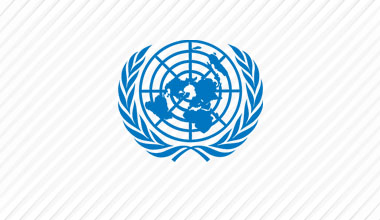UNIFIL’s highest post: Rendezvous of thrill, valour, dedication and commitment
UN peacekeeping in south Lebanon does not always mean patrolling towns and villages or round-the-clock monitoring of the 120-kilometre Blue Line.
For a group of UNIFIL Indian peacekeepers, it’s far more than that.
It’s about a treacherous trek along a rather uncharted steep hill, navigating through spiky stones, wobbly boulders and thorny shrubs. Every day. Morning and evening. During snowy winter, and during scorching summer.
It’s about getting to UNIFIL’s highest observation post, at about 1,800 metres above sea level, and returning to its parent post located downhill nearby.
In order to get to the Observation Post One (OP1), all they need are perseverance, valour and a commitment to UN Security Council Resolution 1701, which forms the core of UNIFIL’s mandate.
A makeshift post tucked in the steep uninhibited hills near the village of Shab’a and manned during the day, OP1 is also the most easterly UNIFIL post along the Blue Line that separates Lebanon and Israel.
The only way to get here is by trekking gingerly for about 45 minutes during summer and one hour during winter, from the last vehicle-accessible road near the Shab’a village.
***
It’s late on a summer morning. Lt. Col. Rahul Singh, the commander of the UNIFIL position “4-7 Alpha” located north of the village of Shab’a, gives orders to 10 peacekeepers to set out to OP1.
After a quick mission briefing and about 20 minutes of driving – passing through the village of Shab’a and also along a section off-road afterwards – occupants of a three-vehicle convoy start their excruciating uphill trek.
There is no visible trail. In fact, the trekkers have to make one, while walking a steep incline littered with sharp rocks and thorny shrubs. It is so dangerous that even a minor misstep can result in deadly consequences.
“We climb with food, ammunition and supplies. We stay there for the whole day, we do observation of the Blue Line and come back by 7:30 p.m.,” says Lt. Col. Singh, as he stops for a rest at a cave-like corner, briefly sheltered from the midday summer sun.
Sometimes, he said, the Indian peacekeepers trek with heavy loads, including weapons, ammunition, rations and equipment. Not long ago, they carried a 250-kg generator.
While the peacekeepers start around 5:30 a.m. and return by 7:30 p.m. during the summer, the duration is shorter during the winter, between 6:00 a.m. and 6:00 p.m.
Along the way, Lt. Col. Singh and his team bump into a shepherd and his 200-something herd. They know each other; hence they wave and exchange greetings.
***
Finally at the top! This particular trek took more than an hour because of some visitors from UNIFIL Headquarters in Naqoura, who have not mastered such grueling physical labour.
Four makeshift structures in a column, which together form OP1, look like a desert island standing tall in the middle of nowhere. All they have here are a duty post, a resting post, a store and a kitchen next to a washroom, arrayed together within a stone fence. No electricity or running water or cellular phone service. The only means of communication is the radio.
While one can only see arrays of rocky hills in the east and the south, some of the distant views are spectacular. The scenic Bekaa Valley about 33 kilometres away is visible in the north, the town of Ibil al-Saqi is visible in the east and the Shab’a village sits just below.
There is no trace of life in the immediate proximity except for occasional shepherds and their herds.
The eight UNIFIL peacekeepers who operate the post during the day and work to monitor and prevent any violation of the Blue Line, are in full gear and actively observing the surroundings.
Its location is important for its proximity to both Syria and Israel, which are just a few kilometres away.
Lt. Col. Singh says there are four familiar shepherds and their herds, who regularly make rounds to the area, sometimes inadvertently crossing the unmarked Blue Line, which constitutes a violation of resolution 1701.
“We are here for (monitoring and preventing) Blue Line violations, which usually happen during the day, and by shepherds,” says Lt. Col. Singh. “If some shepherds don’t leave, we also don’t leave this position until they are gone.”
On the day of the visit, shepherds and their herds had violated the Blue Line twice and were eventually called back.
“The Blue Line is generally unmarked and invisible here, and is marked based on natural rocks and mountains,” adds the Indian commander. “Shepherds with 200 or 250 goats usually cross the Blue Line; we try to stop them by communications and sometimes they cross unintentionally, and we call them and they come back.”
During the months of January and February, this 360-square-metre position is cut off for 10 to 15 days because of heavy snow, which sometimes measure up to five feet.
And the peacekeepers here keep themselves warm using kerosene heaters.
***
UNIFIL Indian peacekeepers took over this secluded post, along with the UNP 4-7A, from outgoing Norwegian peacekeepers in 2002.
The operational activities our Indian peacekeepers conduct here epitomize UNIFIL’s daily routine. Preserving the sanctity of the Blue Line is at the heart of it.
It is a huge toil to operate this post, which contributes directly to the implementation of UNIFIL’s mandate.
OP1 is the rendezvous of thrill, peril, valour, dedication and commitment.
***
Article: Tilak Pokharel
Video: Zeina Ezzeddine
 UN
UN United Nations Peacekeeping
United Nations Peacekeeping












